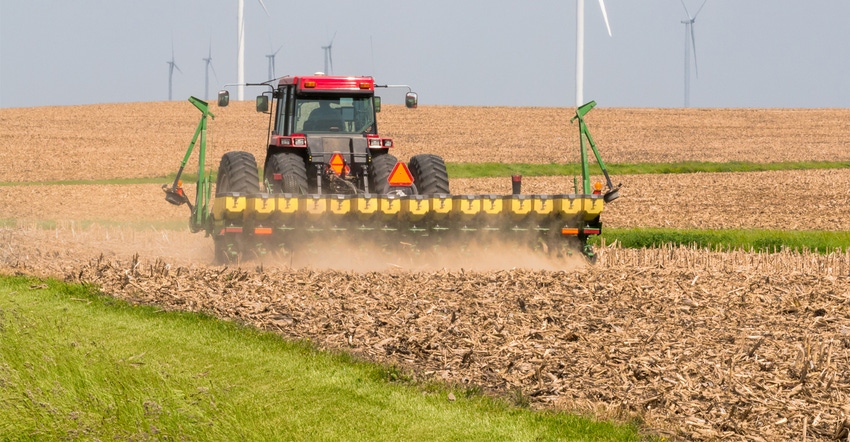
Finally, the first real sign of the farmer’s spring has arrived. No, not the first robin. They now hang around all winter. No, not emerging daffodils or crocuses. They pop through the ground on the second sequential warm winter day.
Stepping out on my porch last night, I was greeted by the less-than-fragrant scent of fresh manure wafting in the heavy evening air. While citified folk would be repulsed by it, it was sweet to my nostrils. Yes, that’s a tad strange. But it’s a long-awaited signal that field work is ready to roar this week. None too soon, I must add.
Like most of the Midwest, “too cold and too wet” was the early April rule for the Northeast. New Jersey and the Delmarva region has been the exceptions, according to last week’s Crop Progress & Condition report from USDA’s National Ag Statistics Service. Here’s a closer peek:
It depends in Maryland and Delaware
It all depended on which side of the Chesapeake Bay and the soils you were farming on. On the Eastern Shore, cool, wet conditions didn’t keep farmers out of the fields. They had close to five days suitable for field work. Field work included corn and barley planting plus monitoring winter wheat heading.
Across the Chesapeake, cold and wet weather slowed wheat, pasture and hay growth, and kept field work to a minimum from Baltimore County westward. Frost damage and freezing still ruled the lands rising to the Appalachians.
New Jersey wet and muddy
By NASS’ rating, the state had 4.5 days suitable for field work during April’s first week. That must have meant the sun poked through the rain clouds on a few days. All stations reported precipitation and wet, muddy fields that delayed much of the planting and field preparations.
That same weather has put vegetable growers behind normal planting and transplanting schedules for outside crops. As reported in Monmouth County, soaking wet, muddy and sloppy field conditions are setting back planting and field preparations to being very late.
Poor work week in Pennsylvania
The NASS report says the Keystone State provided only two days suitable for field work in the first week of April. Again, cold, wet weather was to blame. While a few fields of alfalfa were planted, manure hauling was about the only field activity.
Fruit trees were generally slow to bud — a good sign. Moving farther north and west, rain and snow put a chill on field work. Spring planting is well behind schedule.
North to New York’s extremes
April’s first week yielded a measly average of one day suitable for field work. It would appear that the Empire State's bad farming weather from 2017 may be leaking into 2018. Extremely cold temperatures delayed most farming activity. Growing degree day accumulations, based on GGD base 50 degrees F, were absolutely zero across the state.
Snow was the rule for most reporting counties. Strong winds and power losses due to nor’easter weather were reported in northern and eastern counties. Fruit budding was slowed and concerns were raised about wheat crop development.
New England still amid winter
The best New England news was that the region had a great maple sap season. While many areas reported snow and Nor’easter wind damages, NASS reported an average of two days suitable for field work. Most farm activity was in greenhouses, not fields.
Below normal temperatures melted some snowfall during the days then froze the precipitation at night. Frozen soils, muddy fields and frost-ridden mornings continued to delay field preparations for most. Here, too, 50-degree GDD accumulations remained at zero throughout the region. In Massachusetts, however, cranberry growers are trying to use the 41-degree or 44-degree GDD bases for monitoring spring frost and bud development.
About the Author(s)
You May Also Like




